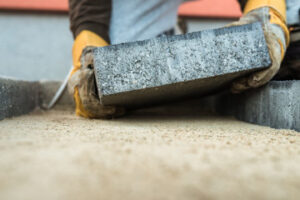Baltimore Motorcycle Accident Attorney understands how insurance companies operate and has the skillset needed to navigate complex legal processes. They’ll investigate the facts of your case, file insurance claims properly, and negotiate with the insurer on your behalf.

They can also help you recover compensation for your losses, including medical bills, lost income, and repair or replacement costs for your bike. They’ll work with expert witnesses to support your case.
When you’re involved in a motorcycle accident, you have enough to worry about, including medical bills that keep adding up and the impact of your injuries on your quality of life. Hiring an experienced attorney can take some of the weight off your shoulders and ensure you receive adequate compensation from the insurance company.
A specialized lawyer has an extensive understanding of motorcycle accidents and the laws that apply to them. This enables them to review your policy, identify potential avenues for maximizing compensation within its terms and determine which coverages may be relevant to your case.
They also have a thorough understanding of insurance companies and how they operate, allowing them to navigate their tactics and negotiate effectively on your behalf. They will fight to ensure you receive the full compensation you are entitled to, including payment for your immediate and future medical expenses, lost wages and the impact your injuries have on your quality of life.
Lastly, they are familiar with filing deadlines and other legal complexities that can be confusing for someone without a legal background. They will ensure all paperwork is filled out correctly and filed promptly to avoid any missed deadlines that could compromise your case.
They will also have the resources needed to conduct a thorough investigation, including access to expert witnesses and medical professionals who can help establish the cause of your accident and the full extent of your damages. They will also be able to consult with specialists in the field of motorcycle accidents if necessary. By doing so, they can ensure your case is thoroughly prepared and has the best possible chance of a successful outcome.
Knowledge
The period following a motorcycle accident can be incredibly stressful and overwhelming for victims. Not only do they have to deal with the physical and emotional stress of their injuries, but they must also navigate through legal proceedings and persistent calls from insurance companies that don’t have their best interests in mind.
Having an attorney with specialized knowledge can level the playing field in the process and ensure that you’re not taken advantage of. Attorneys who specialize in motorcycle accidents know the context of these cases, how to gather and analyze evidence, and can accurately assess the amount of your losses. They also have a network of professionals, including medical specialists and accident reconstruction experts who can help build a strong case for your claim.
Insurance companies often deny or minimize claims for victims of motorcycle accidents, but a seasoned attorney can help you get the compensation you deserve. They have the experience to appeal denied claims, and they can provide expert guidance through each step of the process.
A knowledgeable lawyer can help you obtain compensation for a variety of economic and non-economic damages, such as lost income, property damage, medical bills, pain and suffering, and funeral expenses. They can also evaluate the extent of your injuries and the long-term effects they will have on your life.
In addition, a motorcycle accident attorney can recommend the appropriate medical specialists to treat your injuries, and they will serve as reliable witnesses in court if necessary. They can also advise you on how to handle your case, whether it will require mediation or trial. Plus, most attorneys work on a contingency fee basis, which means you won’t pay them unless they win your case.
Expert Witnesses
In court cases, expert witnesses are often necessary to provide evidence based on established research and science. They help counter subjective biases and interpretations that can influence the judge or jury. They can perform independent examinations, make site visits, and review evidence in their specialized fields to form their opinions. Examples of expert witness testimony include DNA fingerprinting, forensic firearm examination, computer forensics, and accident analysis.
Your attorney will enlist the help of these experts to gather evidence and prove your case. They will investigate the accident to determine what caused it, who was responsible, and how it could have been prevented. They will also work with eyewitnesses who can provide statements and other valuable information.
A qualified injury lawyer can also help you recover the compensation you deserve for your medical expenses, lost wages, and property damages. They will be able to calculate your losses and file the claim on your behalf. Your injury claim may also cover your emotional distress, pain and suffering, and inconvenience.
It is important to contact an experienced motorcycle accident lawyer immediately after your crash. The State of New York only allows you three years to file a personal injury lawsuit or claim for damages resulting from your motorcycle accident. An experienced lawyer can help you avoid the common pitfalls that could hurt your chances of receiving full compensation. They will know how to negotiate with insurance companies and be fully prepared to take your case to trial if necessary. They will be able to handle all aspects of your case, from conducting a free evaluation of your injuries and losses, to filing the appropriate documents for your claim.
Negotiation Skills
A good motorcycle accident attorney is skilled at negotiating with insurance companies and can secure fair compensation for their clients without the need for lengthy trials. In the event that a case does need to go to trial, they have the courtroom experience needed to present strong evidence and argue in favor of their client’s rights.
While legal expertise is crucial, empathy and compassion are also important characteristics of an effective motorcycle accident attorney. They understand that their clients are often suffering from traumatic injuries and have a deep understanding of the emotional toll that this takes on victims. Having a strong relationship with a clients can make all the difference in getting them through a difficult and confusing time.
When meeting with potential lawyers, be sure to ask how they communicate with their clients. You should also be aware of how long it may take them to return calls or emails. This is a great way to get a feel for their professionalism and how they might handle your case.
Determining your claim’s worth requires careful evaluation of all the damages you’ve incurred, from medical expenses to property damage. A skilled lawyer will tally up all losses and costs to accurately estimate your claim’s worth. They’ll also be able to compare offers against similar motorcycle accident settlements to determine if you’re being fairly compensated for your injuries.
Winning a settlement against an insurance company is often a long and complicated process, especially in cases involving severe injuries. Inexperienced lawyers can miss a crucial aspect of a case or mishandle the evidence, which can lead to lower compensation for their clients. A skilled motorcycle accident lawyer will be able to quickly assess a situation, identify any obstacles and develop strategies for immediate resolution.
Representation in Court
A competent motorcycle accident lawyer can represent you in court if necessary. They understand how to build a strong case and will work diligently to ensure that all issues are addressed. This can include pursuing all sources of liability, including other drivers who may have been involved in the crash.
The attorney will also be able to provide guidance on whether to settle or proceed to trial. They will know how to assess the settlement value of your claim and negotiate with the insurance company on your behalf. They will also be able to evaluate any lowball offers and fight them on your behalf to ensure you receive what you deserve.
Your lawyer will be able to provide detailed evidence and witness testimony to support your claim for compensation. This can include scene photos, medical records, police reports and eyewitness statements that will help prove the cause of the accident and the extent of your injuries and losses.
They will also have a good understanding of the laws and regulations that apply to your case. This will include knowledge of traffic law, personal injury and insurance law. This will ensure that your case is handled correctly and that you don’t miss any deadlines or lose any rights to compensation.
When choosing a motorcycle accident attorney, it is important to find one who will take the time to get to know you as an individual and treat your case with the care and attention that it deserves. It is also recommended that you meet with several different attorneys before making a decision. This will give you a feel for how they will handle your case and make you feel comfortable with them.





